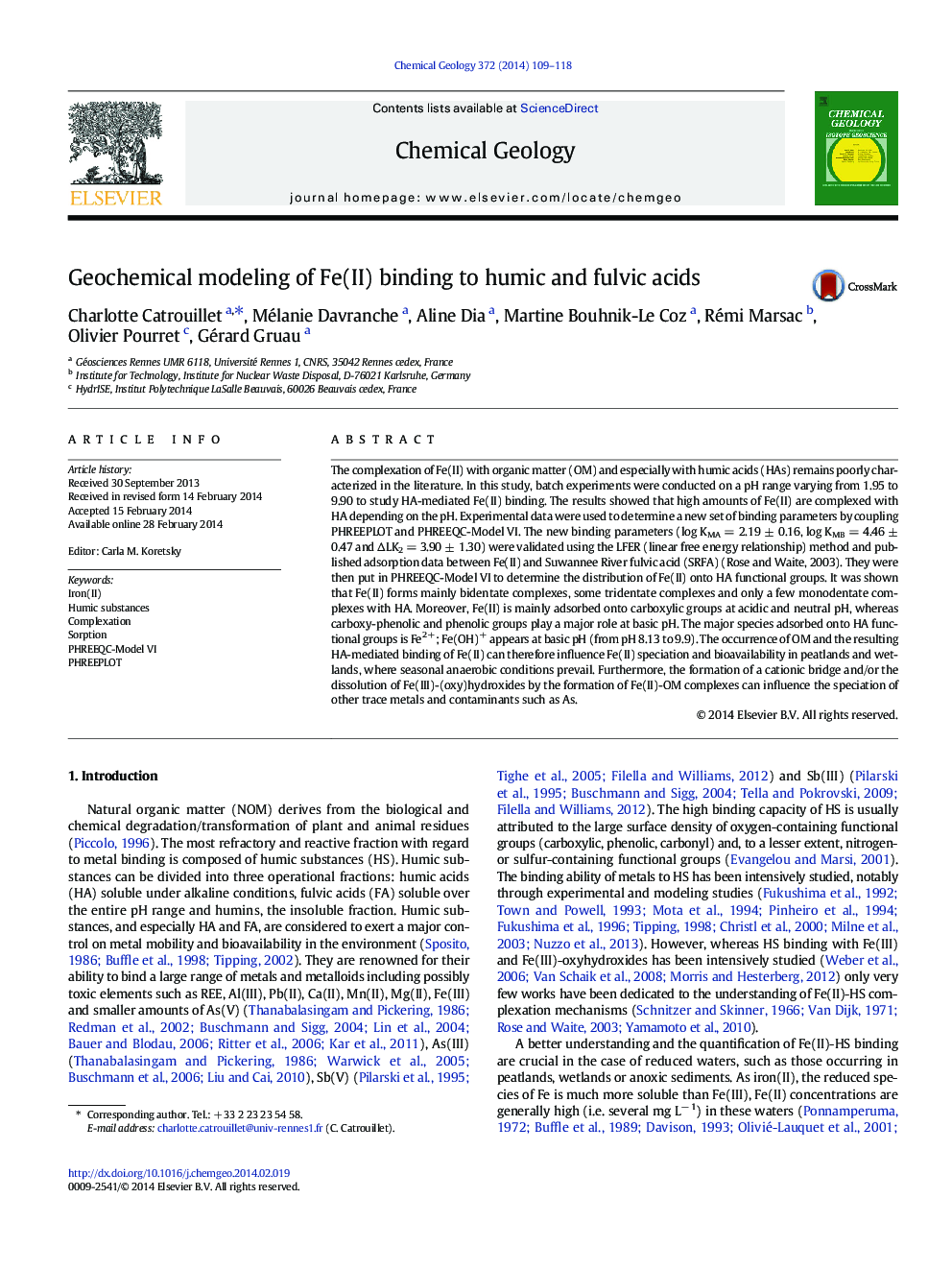| Article ID | Journal | Published Year | Pages | File Type |
|---|---|---|---|---|
| 4698813 | Chemical Geology | 2014 | 10 Pages |
•We measured Fe(II)-humic acid adsorption isotherm and pH sorption edge.•Results were modeled using a coupling of PHREEPLOT–PHREEQC-Model VI.•We determined the binding parameters for Fe(II)-humic acid complex.•We validated the binding parameters using LFERs and published datasets.•We determined the speciation of Fe(II)-humic acid complexes using PHREEQC-Model VI.
The complexation of Fe(II) with organic matter (OM) and especially with humic acids (HAs) remains poorly characterized in the literature. In this study, batch experiments were conducted on a pH range varying from 1.95 to 9.90 to study HA-mediated Fe(II) binding. The results showed that high amounts of Fe(II) are complexed with HA depending on the pH. Experimental data were used to determine a new set of binding parameters by coupling PHREEPLOT and PHREEQC-Model VI. The new binding parameters (log KMA = 2.19 ± 0.16, log KMB = 4.46 ± 0.47 and ΔLK2 = 3.90 ± 1.30) were validated using the LFER (linear free energy relationship) method and published adsorption data between Fe(II) and Suwannee River fulvic acid (SRFA) (Rose and Waite, 2003). They were then put in PHREEQC-Model VI to determine the distribution of Fe(II) onto HA functional groups. It was shown that Fe(II) forms mainly bidentate complexes, some tridentate complexes and only a few monodentate complexes with HA. Moreover, Fe(II) is mainly adsorbed onto carboxylic groups at acidic and neutral pH, whereas carboxy-phenolic and phenolic groups play a major role at basic pH. The major species adsorbed onto HA functional groups is Fe2 +; Fe(OH)+ appears at basic pH (from pH 8.13 to 9.9). The occurrence of OM and the resulting HA-mediated binding of Fe(II) can therefore influence Fe(II) speciation and bioavailability in peatlands and wetlands, where seasonal anaerobic conditions prevail. Furthermore, the formation of a cationic bridge and/or the dissolution of Fe(III)-(oxy)hydroxides by the formation of Fe(II)-OM complexes can influence the speciation of other trace metals and contaminants such as As.
Graphical abstractFigure optionsDownload full-size imageDownload as PowerPoint slide
